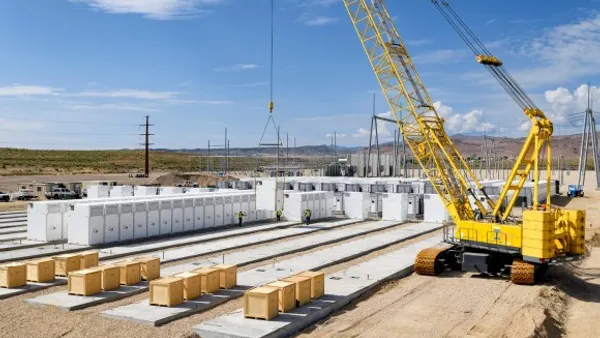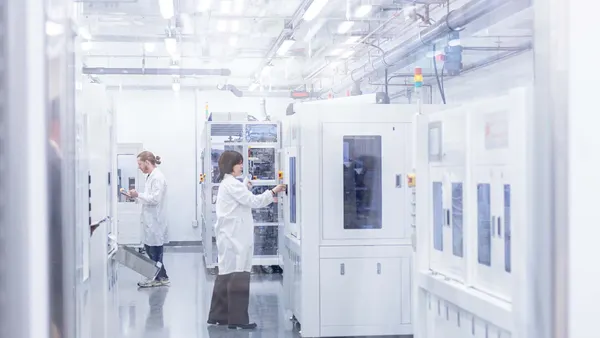Dive Brief:
-
The California Independent System Operator's (CAISO) board of governors last week approved market policies to better integrate new battery storage resources that would allow hybrid storage resources to provide energy and ancillary services to contribute to transmission system reliability.
-
The system operator moved quickly to approve the proposal in light of the more than 1,500 MW of storage capacity expected to come online in California by the end of next year. This is part of around 3,300 MW of new procurement that the state is seeking to replace retiring fossil fuel plants by 2023.
- The new policy provides a lot of market certainty around how these resources are supposed to operate in the market, said Jin Noh, policy manager at the California Energy Storage Alliance (CESA). With utilities like Southern California Edison (SCE) and Pacific Gas & Electric (PG&E), as well as community choice aggregators, procuring significant amounts of storage, "the timing couldn't be better in terms of having this type of market certainty," Noh added.
Dive Insight:
CAISO expects that storage paired with wind and solar will be a key component of the strategy to replace retiring natural gas and coal-fired generation across the West. For instance, the grid operator anticipates that the retirement of a fleet of once-through-cooled natural gas plants could lead to capacity shortfalls over the next few years — an issue that storage developers, who have filed a significant number of interconnection requests, are looking to address.
California utilities and community choice aggregators have also been investing in storage resources — PG&E, for instance, asked for regulatory approval of five lithium-ion battery projects totalling 423 MW/1,692 MWh earlier this year, while SCE in May announced that it is procuring a 770 MW/3,080 MWh package of battery resources.
Ensuring that hybrid storage resources are valued appropriately and that the grid operator has the visibility to be able to use these resources properly will be a key step towards getting to the point where they can fill the gap left by retiring natural gas resources, said Adenike Adeyeye, Western states energy manager and senior analyst with the Union of Concerned Scientists.
"Storage is really effective when it's paired with a renewable resource like wind or solar, but then that creates that kind of mixing, where you're trying to create rules for a resource that hasn't really existed before," Adeyeye explained.
Last week's proposal is the second policy that CAISO has approved regarding different technologies located behind the same interconnection — in July, it adopted a "co-located" resource model that allowed each resource to have an individual ID and dispatch separately into the ISO market. Under the hybrid policy approved last week, the different resources will have a single ID, allowing them to be managed by the resource operator rather than the ISO.
There are different advantages to both models, Noh said: the former is generally more flexible, and allows the ISO to have greater visibility into each component of the combined resource. But it could also lead to challenges related to investment tax credit compliance — since the storage element is operating separately from its co-located solar resource — which is why developers have been wanting to also pursue a hybrid resource model.
The proposal adopted last week includes a new tool for the owners of hybrid resources, which will give the grid operator more insight into the amount of energy the resources can provide in real time. It also allows co-located batteries to provide grid reliability services, and requires both hybrid and co-located storage resources to provide the battery's maximum output to data to improve forecasting.
While CESA is pleased with the proposal, there are other issues that need to be worked out, including figuring out how these resources will be assessed under the ISO's unforced capacity methodology, Noh said.
"So I think it's the first step, and I hope we can start making additional refinements going forward," he added.












